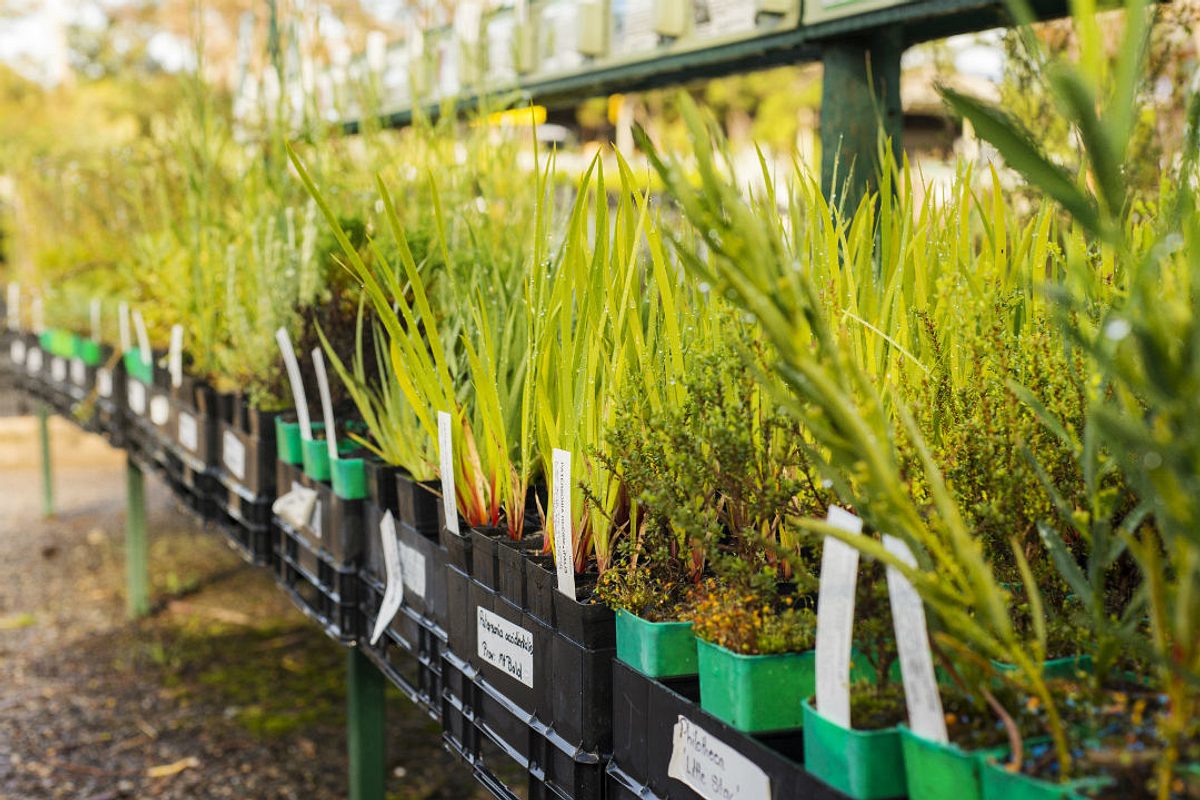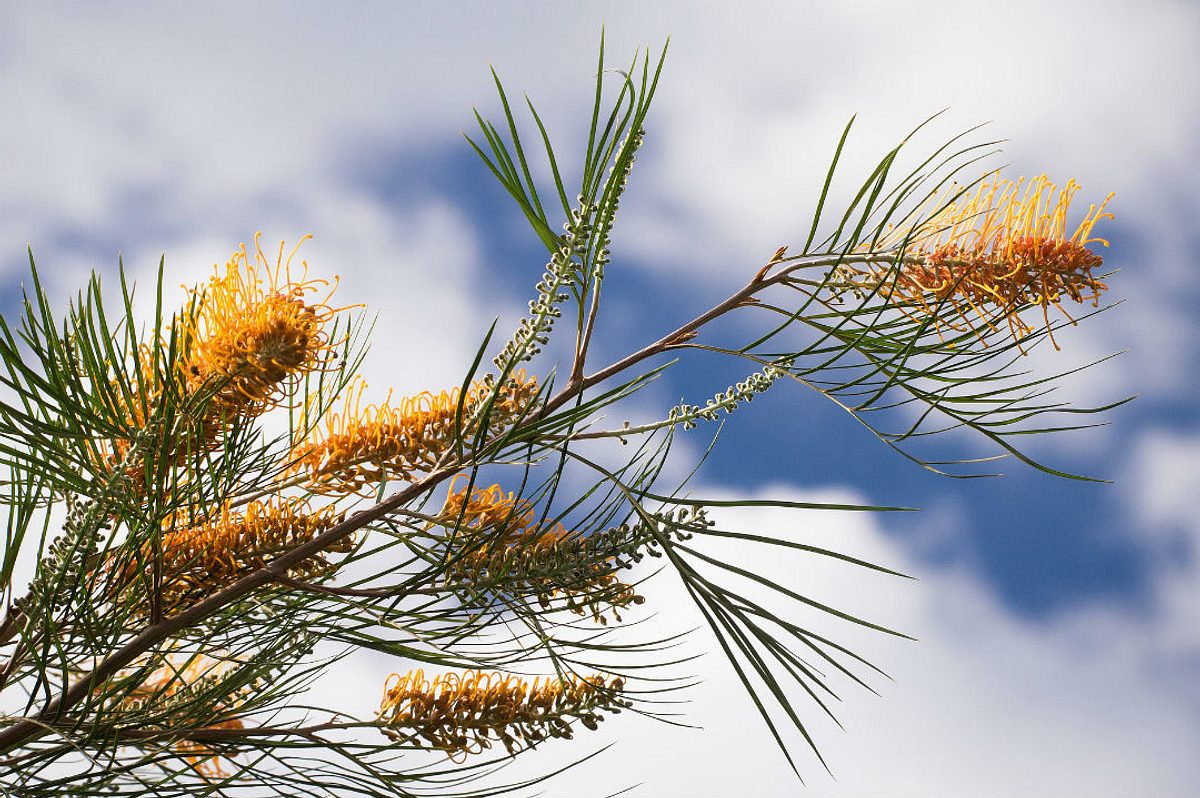
4 simple steps to creating your own native garden
Australia's unique and beautiful flora is distinct from anywhere else in the world, so it’s only natural that you’d want your backyard to be full of them.
Growing native plants is easy, great fun and has many benefits for you and the environment.
To increase your chances of success and reap the rewards of your efforts, just follow these 4 simple steps and you’ll be well on your way towards creating your own native flora sanctuary:
1. Plan and prepare
Planning and site preparation are the most important aspects of any successful planting.
Weed control should be done before planting via grazing, hand pulling or spot spraying. This will result in healthier and fast-growing seedlings, as they won’t have to compete with weeds for space and resources.
Buying seedlings rather than seeds will give your garden a head-start as some species take quite some time for the seed to germinate. You may consider buying advanced plants, however seedlings often establish faster and will quickly outgrow larger natives planted out from big, expensive pots.

When choosing your plants, it’s important to choose species that are local to your area and suited to the climate conditions and soil type. Check out the Botanic Gardens of South Australia’s Plant Selector tool to find suitable species for your place.
Then it’s time to map out the placement of your plants. If it helps, draw a map of your garden to help you work out how many seedlings you’ll need and where they are best placed, so that you can visualise the look you’re going for.
Many natives are sensitive to poor drainage, so locate the well-draining and poorly draining areas of your garden and choose species accordingly.
If you wish to achieve a natural look, avoid planting in rows by growing several of the same species together in a cluster.
2. Lock in a date
Once you have planned your garden and written your shopping list, it’s time to lock in a date for a planting day.
Planting should be done during the wetter, cooler months of the year: autumn, winter or early spring.
This gives plants the best chance to establish themselves during mild conditions and makes the most of seasonal rainfall.
3. Plant seedlings properly
Often native plants can be slow to adjust after being transplanted. To increase the success and encourage healthy growth of your new seedlings, your planting technique is important. Follow these pointers and you’re set for success:
Dig the right sized hole
The most common mistake is digging the hole for your seedling either too shallow or too narrow. The ideal hole is twice as deep and twice as wide as the seedling container. To prepare the soil for your native plants, fill the hole with water and allow it to soak into the ground.
Soak the soil around the root ball
While the plant is still in its container, submerge it in a bucket of water until it stops bubbling – be sure not to submerge the entire plant. This helps get rid of air around the roots and makes it easier to get the plant out of the container.
Carefully remove the plant from the container
Remove the plant from the container, being careful not to disturb the roots more than necessary. The soil and root ball should come away easily. If not, tap the pot lightly with a small garden tool. Support the base of the exposed seedling with one hand and use your other hand to hold the roots and soil together as you place it carefully in the hole.
Add soil and pack firmly
Backfill the hole with soil and press it down firmly without compacting it. Create a small dip around the plant to help capture rainfall and guide water around the plant roots.
Water new plants immediately. A good soaking reduces evaporation, settles the soil, reduces air pockets and encourages roots to become stronger, by growing deeper as they look for moisture.
Top tip: Want to see a planting demo? Check out our story: 6 simple steps to planting a tree.

4. Care for your plant babies
Native plant babies require a lot less care than exotic species, however watering and mulch is recommended. Here are the basics:
Deep watering for the win
If you plant your seedlings at the right time of year – the wetter, cooler months: autumn to early spring – they should survive on rainfall alone.
Check your plants every few weeks though, and if the soil is dry, give them a good drink. Water regularly during their first summer, however in the longer term, they will be fine relying on rainfall.
Be sure not to overwater as this can result in ‘soft’ plants – plants that have poorly developed roots and are likely to struggle during drier spells.
To prevent this from happening, infrequent deep watering is the way to go. This allows water to travel deep down into the soil, which is easily accessible for uptake by plant roots and reduces water loss via evaporation.
Top tip: Deep watering creates deep roots, resulting in a healthier plant that is able to survive droughts as they are able to use the roots to extract water from deeper soil layers.
Add mulch
In the bush, leaf litter forms a very natural and beneficial layer over the soil. To ensure the health of your plants, it’s good to mimic this in your native garden by applying mulch.
Mulch can include stones, gravel and organics such as leaf litter, wood chips or straw.
Mulch helps to:
- retain water in the soil and can reduce evaporative water loss by more than 70%
- reduce weed growth
- regulate soil temperature by keeping it cooler in summer and warmer in winter
- increase the biodiversity of soil invertebrates that maintain soil structure and productivity.
Be sure not to apply your mulch too thick, as this can deoxygenate the soil and suffocate plant roots – about 7 or 8 cm is a good depth.
If you have any questions along the way, visit State Flora where horticultural staff are available to provide useful advice throughout your native garden journey.
Want to learn more about thebenefits of native gardens? Read our story:5 top reasons to plant natives in your garden.
This story was originally posted in August 2019.





